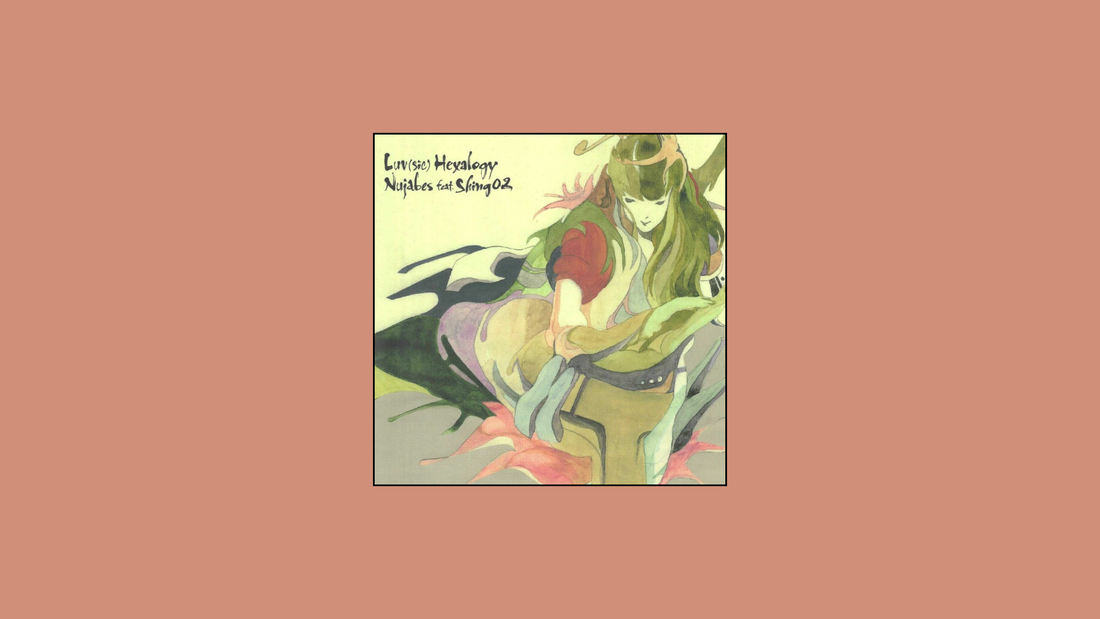
Luv(sic) Hexalogy – Nujabes & Shing02 (2015)
The Architecture of Absence
By Rafi Mercer
Some records don’t end when the music stops — they linger, looping quietly inside you, unfinished but complete. Luv(sic) Hexalogy is one of those. It’s not so much an album as an elegy stretched across time: six movements, written and released over fourteen years, two artists separated by death yet united by sound. It’s the sound of friendship surviving silence — and somehow, of beauty surviving grief.
The story begins in early-2000s Tokyo, when a quiet, bespectacled producer named Jun Seba — known by his anagram, Nujabes — began to shape hip-hop into something tender. He loved jazz chords, old soul records, brushed snares, and the idea that rhythm could heal. Around the same time, an equally thoughtful Japanese-American rapper and poet named Shing02 was finding new ways to talk about identity and love in the language of rhyme. Together, they started to build something that sounded unlike anything else.
The first track, Luv(sic), appeared in 2001 — a small release on Nujabes’ Hydeout Productions label. It was intimate, melancholic, precise: a jazz loop lifted from Aki Takase’s Minerva’s Owl, a flutter of strings, soft drums, Shing02’s warm, meditative flow about the creative process and human connection. It wasn’t a love song in the usual sense; it was about music as love itself. The second and third instalments followed in 2002 and 2003, each deepening the tone — more reflective, more intricate, a little sadder.
Then, in February 2010, Nujabes died in a car accident at just thirty-six. The shock ran deep — not just in Japan’s underground hip-hop scene, but across a generation of listeners worldwide who’d found solace in his records. His albums Modal Soul and Metaphorical Music had already achieved cult status, their influence stretching from chill-hop producers to lo-fi YouTube channels. But it was the unfinished Luv(sic) series that became the heart of the story.
At the time of his death, instrumentals for parts four and five had been sketched, and the beat for part six — found later on his phone — was unfinished. Over the next few years, Shing02 and the Hydeout team worked carefully to complete them. The sixth and final part, subtitled Grand Finale, was released on 26 February 2013, the third anniversary of Nujabes’ passing. It was a posthumous collaboration in the truest sense — not just finishing someone’s work, but preserving their language.
In 2015, the six parts were gathered together, remastered, and released as Luv(sic) Hexalogy. Listening to it now feels like walking through six rooms built by two people across time — each one slightly different in light and tone, yet connected by a single architectural rhythm.
The early tracks still shimmer with the optimism of discovery. Luv(sic) Part 1 is bright, all brushed hi-hats and piano loops — the sound of an afternoon sun through thin curtains. Part 2 drifts toward Brazilian warmth, its harmonic DNA borrowed from Ivan Lins and Elis Regina’s Qualquer Dia, the sample reshaped until it feels like breathing. Part 3 adds introspection; Shing02’s voice grows older, his delivery slower, more deliberate. Nujabes’ production matures alongside — the loops more layered, the bass more tactile.
Then comes Part 4, recorded after Nujabes’ death. The tone changes. It’s still beautiful, still delicate, but there’s something ghostly beneath the rhythm. Shing02’s verses turn inward, meditating on loss, continuity, the duty of keeping creation alive. By Part 5, the theme becomes explicit — art as afterlife, love as memory. The sample from Gershon Kingsley’s Sounds of the City (Beginning) gives it an almost cinematic melancholy.
And then there’s Part 6: Grand Finale. Built from fragments found on Nujabes’ phone, completed by Shing02 and Uyama Hiroto, it closes the circle. The beat is slower, gentler, luminous — piano, vibraphone, brushed drums, the faintest trace of sadness. Shing02’s voice is no longer rapping to Nujabes, but with him. The track fades with a quiet repetition of the series’ refrain: “Love sick like a dog with canine sensitivity.” It’s not finality; it’s forgiveness.
In a listening bar, Luv(sic) Hexalogy plays like a story unfolding in whispers. The low end hums softly beneath conversation, the jazz chords seem to stretch the air. There’s warmth, but also weight — the kind of record that makes a room pause, just for a second. The production feels handmade, every loop gently rounded, every sample polished without losing its edges. It’s digital music that somehow feels analog — like something touched, not coded.
Nujabes’ gift was that balance. He sampled with tenderness, never aggression. His beats don’t bang; they breathe. You can hear the care in every bar — the piano voicings, the off-beat percussion, the gentle compression that makes everything feel close. He understood something few producers do: that rhythm isn’t about dominance, it’s about presence.
Culturally, Luv(sic) Hexalogy sits at a fascinating crossroads. It belongs to hip-hop, yes, but it also belongs to jazz, to ambient, to poetry, to the quiet intimacy of late-night rooms. It’s been called “lo-fi” by those who found it through algorithmic channels, but that undersells its precision. This is meticulous music — the work of a producer who studied harmony and a lyricist who studied philosophy. It’s emotional minimalism executed with almost classical discipline.
What makes it beautiful isn’t just the backstory; it’s the equilibrium between emotion and design. You can feel the humanity in it — not as sentimentality, but as care. Even the posthumous production has restraint. No one tried to modernise Nujabes’ sound, or turn it into something fashionable. They let it remain what it was — warm, open, unresolved.
When I play it, I usually do so in sequence, all six parts in one sitting. There’s a rhythm to the listening: first the spark of youth, then reflection, then melancholy, then grace. By the final part, the room always feels different — softer somehow, as if the air itself has been tuned. The record doesn’t demand attention. It earns it, gently.
And that’s what makes Luv(sic) Hexalogy so moving. It isn’t just a testament to Nujabes’ genius or Shing02’s devotion. It’s proof that collaboration can outlive one of its creators. It’s what happens when art becomes language, when the conversation continues long after one voice is gone.
There are few albums that feel this complete — fewer still that are built from fragments and grief. But here, the architecture of absence becomes its own form of presence. It’s not about what’s missing. It’s about what remains.
Luv(sic) Hexalogy is beautiful because it refuses closure. It circles instead, endlessly, like a memory you don’t want to end.
Rafi Mercer writes about the spaces where music matters. For more stories from Tracks & Tales, subscribe, or click here to read more.







